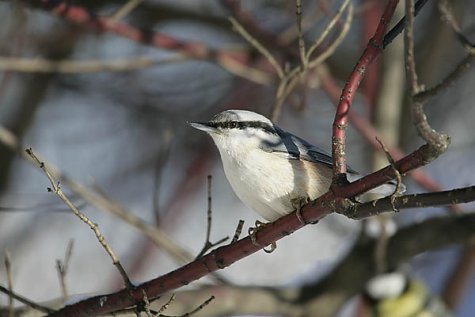VIDEO Nuthatch in action
Video recorded by Ahto Täpsi
Photo Arne Ader
Translation Liis
Nuthatch Puukoristaja Sitta europaea
Nuthatches are true to their nesting areas; parks and cemeteries are suitable, and both broadleaf and mixed forests. They live in all kinds of forests, wooded meadows and parks but for breeding they prefer older broadleaf and mixed forests where trees with hollows can be found. Nuthatches move around in their territory and guard it all year round, so we can often notice a nuthatch pair in action at a bird feeding place.
It is a quick and energetic bird with brisk movements, climbs jerkily but skilfully along branches and tree trunks, also climbs head downwards
It has a blue-gray crown and back plumage, and the streamlined body of the nuthatch ends in a short, strong tail. Underbody whitish, sides and the feathers on the underside of the tail rust-coloured but with white tips. A prominent black eye streak extends to the shoulder, with white eyebrows above the dark brown eyes, the long and strong beak dark grey. The plumage of all nuthatches is similar but the sides of the male are more strongly reddish-brown near the feet. Length less than 15 centimetres, weight about 20 grams.
The nuthatches are the only ones of our birds that move on trees, head dwonwards, without using the tail as support on the tree trunk as woodpeckers or the tree-creeper does. The brownish yellow legs of the nuthatch are very short, the toes with a very wide span and with long and strong claws. On the ground nuthatches move by jumps.
Nuthatches are common in the Estonian mainland but rare in the islands. The winter number may be estimated at around 100 000 individuals.
Nuthatch









